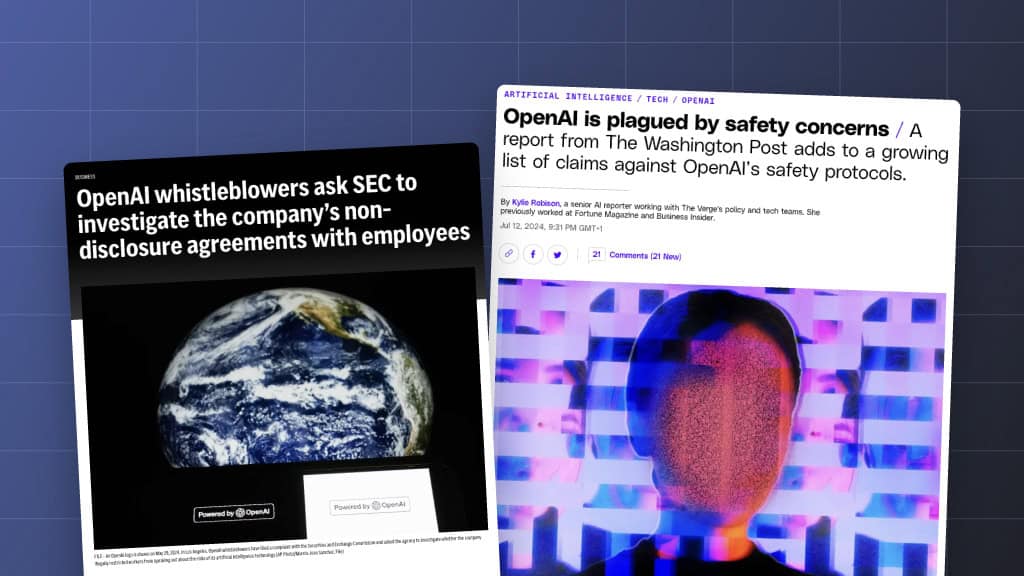How Do We Align Artificial Intelligence with Human Values?

Contents
Click here to see this page in other languages: Chinese ![]() German
German![]() Japanese
Japanese ![]() Russian
Russian ![]()
A major change is coming, over unknown timescales but across every segment of society, and the people playing a part in that transition have a huge responsibility and opportunity to shape it for the best. What will trigger this change? Artificial Intelligence.
Recently, some of the top minds in Artificial Intelligence (AI) and related fields got together to discuss how we can ensure AI remains beneficial throughout this transition, and the result was the Asilomar AI Principles document. The intent of these 23 principles is to offer a framework to help artificial intelligence benefit as many people as possible. But, as AI expert Toby Walsh said of the Principles, “Of course, it’s just a start…a work in progress.”
The Principles represent the beginning of a conversation, and now that the conversation is underway, we need to follow up with broad discussion about each individual principle. The Principles will mean different things to different people, and in order to benefit as much of society as possible, we need to think about each principle individually.
As part of this effort, I interviewed many of the AI researchers who signed the Principles document to learn their take on why they signed and what issues still confront us.
Value Alignment
Today, we start with the Value Alignment principle.
Value Alignment: Highly autonomous AI systems should be designed so that their goals and behaviors can be assured to align with human values throughout their operation.
Stuart Russell, who helped pioneer the idea of value alignment, likes to compare this to the King Midas story. When King Midas asked for everything he touched to turn to gold, he really just wanted to be rich. He didn’t actually want his food and loved ones to turn to gold. We face a similar situation with artificial intelligence: how do we ensure that an AI will do what we really want, while not harming humans in a misguided attempt to do what its designer requested?
“Robots aren’t going to try to revolt against humanity,” explains Anca Dragan, an assistant professor and colleague of Russell’s at UC Berkeley, “they’ll just try to optimize whatever we tell them to do. So we need to make sure to tell them to optimize for the world we actually want.”
What Do We Want?
Understanding what “we” want is among the biggest challenges facing AI researchers.
“The issue, of course, is to define what exactly these values are, because people might have different cultures, different parts of the world, different socioeconomic backgrounds — I think people will have very different opinions on what those values are. And so that’s really the challenge,” says Stefano Ermon, an assistant professor at Stanford.
Roman Yampolskiy, an associate professor at the University of Louisville, agrees. He explains, “It is very difficult to encode human values in a programming language, but the problem is made more difficult by the fact that we as humanity do not agree on common values, and even parts we do agree on change with time.”
And while some values are hard to gain consensus around, there are also lots of values we all implicitly agree on. As Russell notes, any human understands emotional and sentimental values that they’ve been socialized with, but it’s difficult to guarantee that a robot will be programmed with that same understanding.
But IBM research scientist Francesca Rossi is hopeful. As Rossi points out, “there is scientific research that can be undertaken to actually understand how to go from these values that we all agree on to embedding them into the AI system that’s working with humans.”
Dragan’s research comes at the problem from a different direction. Instead of trying to understand people, she looks at trying to train a robot or AI to be flexible with its goals as it interacts with people. “At Berkeley,” she explains, “we think it’s important for agents to have uncertainty about their objectives, rather than assuming they are perfectly specified, and treat human input as valuable observations about the true underlying desired objective.”
Rewrite the Principle?
While most researchers agree with the underlying idea of the Value Alignment Principle, not everyone agrees with how it’s phrased, let alone how to implement it.
Yoshua Bengio, an AI pioneer and professor at the University of Montreal, suggests “assured” may be too strong. He explains, “It may not be possible to be completely aligned. There are a lot of things that are innate, which we won’t be able to get by machine learning, and that may be difficult to get by philosophy or introspection, so it’s not totally clear we’ll be able to perfectly align. I think the wording should be something along the lines of ‘we’ll do our best.’ Otherwise, I totally agree.”
Walsh, who’s currently a guest professor at the Technical University of Berlin, questions the use of the word “highly.” “I think any autonomous system, even a lowly autonomous system, should be aligned with human values. I’d wordsmith away the ‘high,’” he says.
Walsh also points out that, while value alignment is often considered an issue that will arise in the future, he believes it’s something that needs to be addressed sooner rather than later. “I think that we have to worry about enforcing that principle today,” he explains. “I think that will be helpful in solving the more challenging value alignment problem as systems get more sophisticated.
Rossi, who supports the the Value Alignment Principle as, “the one closest to my heart,” agrees that the principle should apply to current AI systems. “I would be even more general than what you’ve written in this principle,” she says. “Because this principle has to do not only with autonomous AI systems, but … is very important and essential also for systems that work tightly with humans-in-the-loop and where the human is the final decision maker. When you have a human and machine tightly working together, you want this to be a real team.”
But as Dragan explains, “This is one step toward helping AI figure out what it should do, and continuously refining the goals should be an ongoing process between humans and AI.”
Let the Dialogue Begin
And now we turn the conversation over to you. What does it mean to you to have artificial intelligence aligned with your own life goals and aspirations? How can it be aligned with you and everyone else in the world at the same time? How do we ensure that one person’s version of an ideal AI doesn’t make your life more difficult? How do we go about agreeing on human values, and how can we ensure that AI understands these values? If you have a personal AI assistant, how should it be programmed to behave? If we have AI more involved in things like medicine or policing or education, what should that look like? What else should we, as a society, be asking?
About the Future of Life Institute
The Future of Life Institute (FLI) is a global non-profit with a team of 20+ full-time staff operating across the US and Europe. FLI has been working to steer the development of transformative technologies towards benefitting life and away from extreme large-scale risks since its founding in 2014. Find out more about our mission or explore our work.
Related content
Other posts about AI, AI Safety Principles, Recent News

Verifiable Training of AI Models

Poll Shows Broad Popularity of CA SB1047 to Regulate AI


